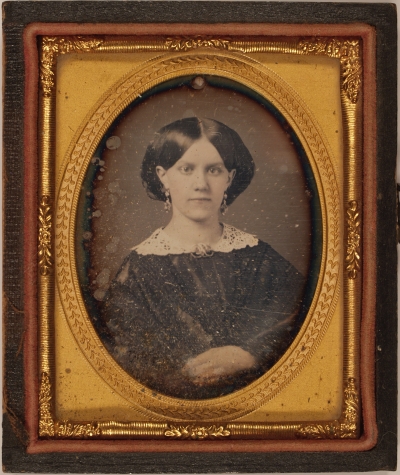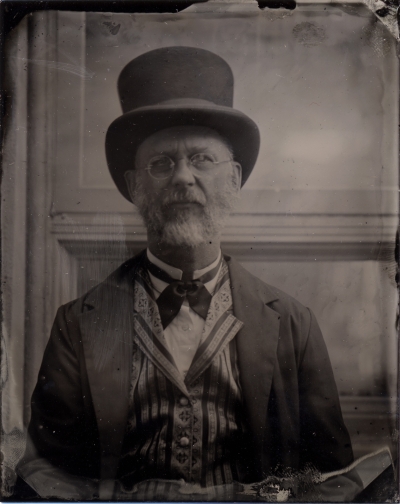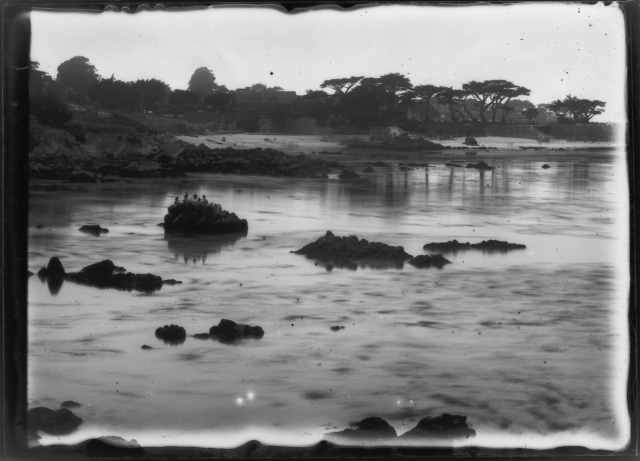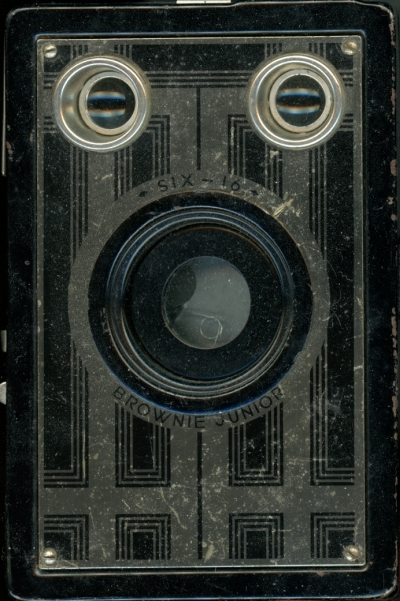
[HOME PAGE]
History of Photography
Why are there so few photographs of the early times at PPLH?

Daguerreotype 1839-1860. Prior to the daguerreotype, the wealthy would record their portraits by expensive artists that involved time consuming multiple unpleasant sittings, drawn or painted, at great expense. Though the daguerreotype was far more accurate and higher resolution, they were also expensive and limited to the wealthy or famous. A typical single image could cost as much as $30 (3 months wages of a common laborer at the time, 1839). The process itself is very dangerous as well to the photographer, involving extremely hazardous mercury vapor, bromine and iodine vapor, silver plating and toxic solvents. Exposures are LONG, from 30 minutes to several hours. This is why these portraits never show smiles. The subjects wore braces, not seen, to hold still this long. Only one copy made at a time.

Tintype process was less expensive, more accessible to a common person, used extensively to record the Civil War, 1860-1870, the first photojournalism. But also very dangerous because of cadmium and silver salts and extremely flammable ether and nitrocellulose. Modern practitioners have access to fume hoods, non-flammable light sources, etc. The entire process from creation of the light sensitive plate to exposure and processing must be done in the field immediately. Typical exposure time was 5-15 seconds in open shade (to reduce contrast). Not as high resolution as the above daguerreotype. ONLY one image is possible at a time. More copies require more images to be made at the time or use the wetplate Ambrotype process (same hazards). Basically a tintype on glass that allowed multiple copies to be made on silver salt paper. Unfortunately, less resolution and finished prints done back in the studio. Tintypes could be finished and handed to the client in the field and were cheaper.

Dry Plate 'film' was far less hazardous to make and use. By using light tight 'film holders' an entire expedition worth of plates could be ready to go and transported long distances. Stored dry and ready to go for months if not longer. Sensitivity (speed) and color sensitivity was enhanced with selective dye additions, quality gelatin emulsions, curing, etc. Up to ten times shorter exposures than the above wet plate processes, gradually increasing until exposures could be made of moving objects (shutter speeds faster than 1/10 second). Smaller prints cost less to make and less to purchase, thereby allowing all classes to record family members for posterity. Many prints can be made from each glass plate negative, also reducing costs for multiply copies, 1871 to 1970. Recently, because of the revival of 'old' processes, they are available again commercially, without need of making them yourself.
It was thought by many professional photographers to represent the end of professional photographers. No longer was it necessary to understand and make your own materials needed for your craft. Anyone with enough money and a minimum of training could record images. Of course this feeling got far worse with roll film and eventually digital materials.
The historically important C.K. Tuttle (Dec. 29, 1859- August 1939) collections, at the PGMNH and in the CA Views archive, were all done on commercially available dry plates.

Kodak Brownie Kodak invented the first roll film in 1888 and brought easy to use "you push the button, we do the rest" photography to everyone. This started the 'snapshot' craze with nearly every family owning and using a camera to record family events and places. No longer needing an expensive studio sitting to remember an ancestor or record special events (weddings, family gatherings, vacations). The wealthy were still able to go to higher end studios to have professional portraits done for company or historical reasons.